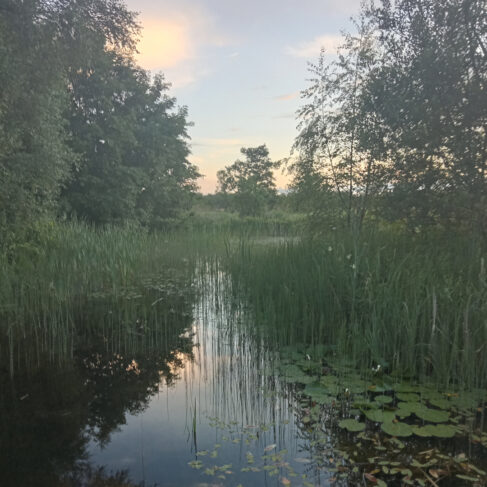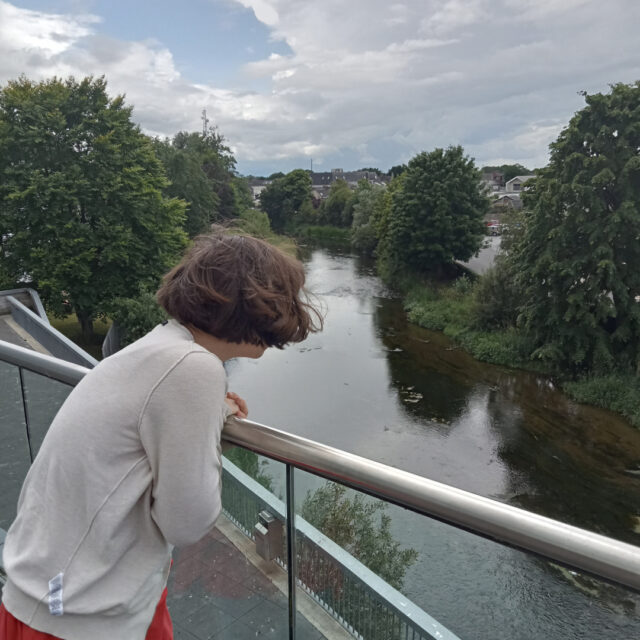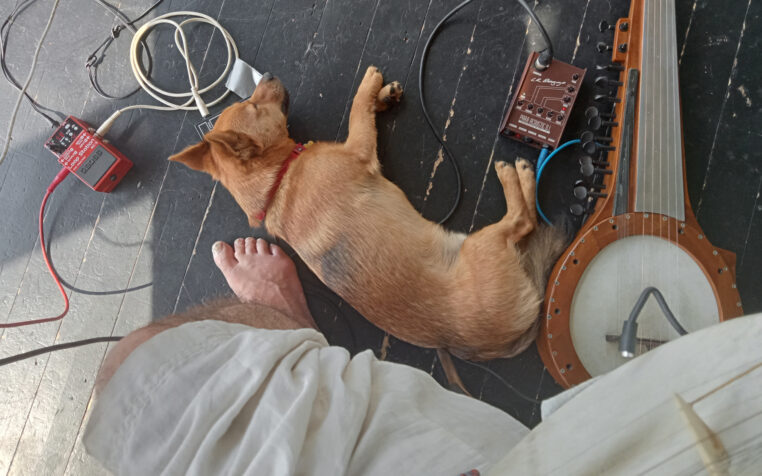

Celebration & Contemplation: Matthew Noone reflects on his NAVIGATOR residency at The Source, Thurles
- Process & creation
As a musician, I have always tried to imagine how my work might be of service to something greater than myself.
During a recent residency in the Source Arts Centre in Thurles, Co. Tipperary I wanted to explore how my improvisation practice could serve not just the local human community but also the non-human world, the local landscape and its many beings. I have always had a deep connection and reverence for the natural world.
Before I even knew what religion was, as a child growing up in Australia I secretly worshipped summer storms, the quiet murmur of my local creek, the majesty of Kookaburra, the esoteric stillness of Red-back spider. During my years in India studying the sarode, I became aware of of the intrinsic connection between the metaphysical and the natural world that underpins the improvised musical system of Hindustani ragas. My teachers described to me that ragas were the sonic embodiment of both Spirit and Earth, and if played correctly, could create fire, summon spirits, bring the rains, speak to animals, make humans weep, fall in love, go to war or commune with the Divine.
When I settled in Ireland, I discovered a sympathetic discourse about the connection between traditional music, landscape and Spirit. The great accordion player, Tony McMahon suggested that this is because Ireland still retains a link to what he calls, ‘the old religions, the old feelings that rocks and rivers and mountains are inhabited by spirits’. It was this intuitive thread, the connection between music, the metaphysical and the natural world, that inspired my residency at The Source.
My studio had large glass windows that overlooked the River Suir. I set up my instruments, various electronics, a speaker, loop pedal and assorted noise makers. As I worked I watched the human and non-human world pass by: traffic, Heron, shoppers, families of Duck, kids cooling off in the June heat, Willie Wagtail. Each day I would either start with an open ended improvisation or else an improvised tune in a traditional format such as a jig, reel, hornpipe or polka. Using a programme called ChucK, I would also process the sound of my instrument, voice or percussion and I experimented with the loop pedal to make asymmetrical rhythms. I enjoyed the process of feeling how to move from a free improvisation into a tune and vice versa, letting a jig disintegrate into drones and glitchy free improvisations.
As well as my time in the studio, I was connected with various musicians in the area and the local landscape. I was greatly inspired by my connections with the local traditional music community as I attended a session in local Monk’s bar and also the legendary Jim of the Mills. I was also particularly inspired by my time at Cabragh Wetlands, a rewilded nature reserve just outside of Thurles town. During my visits and chats with the wetland manager, Micheal, we discussed everything from the distinctions between Entertainment and Ritual, Earth literacy, Consciousness, Rewilding landscape and Community. In particular, Michael discussed with me how Indigenous wisdom attempts to construct a reality that honours the interconnected nature of existence through the polarity of Celebration and Contemplation. I began to wonder how might the indigenous arts of this land be utilised to honour this binary theme. Furthermore, I wondered how improvisation might play a part in a performance orientated towards either Celebration or Contemplation.
As the culmination of my residency, I curated an improvised community performance on the summer solstice at the magical Jim of the Mills. I collaborated with two local artists (keyboardist Eamon O’ Malley and saxsophonist/noise maker Andy Spearpoint) and Clare-based poet Grace Wells to write a solstice poem. This event brought together my interest in the ephemeral nature of improvised music, community, an honouring of indigenous wisdom through traditional repertoire and the marking of the Celtic calendar on the longest day of the year. It was a really inspiring event and an innovative way to perform improvised music with and for a new audience.
I am still percolating the ideas that emerged during this residency, the images, the sensorial memories, the feeling of the landscape, the sounds of traditional melodies integrating and disintegrating. My intuition is that there is potential for improvised music and traditional melodies to speak with each other through their shared relationship with our bodies, land and spirit. I also feel that in exploring this relationship deeper, both internally in my own practice and externally through performance, there is a possibility of reviving an indigenous improvised musical language. I believe that the exploration of indigeneity and musical improvisation has much to offer a broader project of rewilding, not just our ecological environments but perhaps even the rewilding our consciousness.










